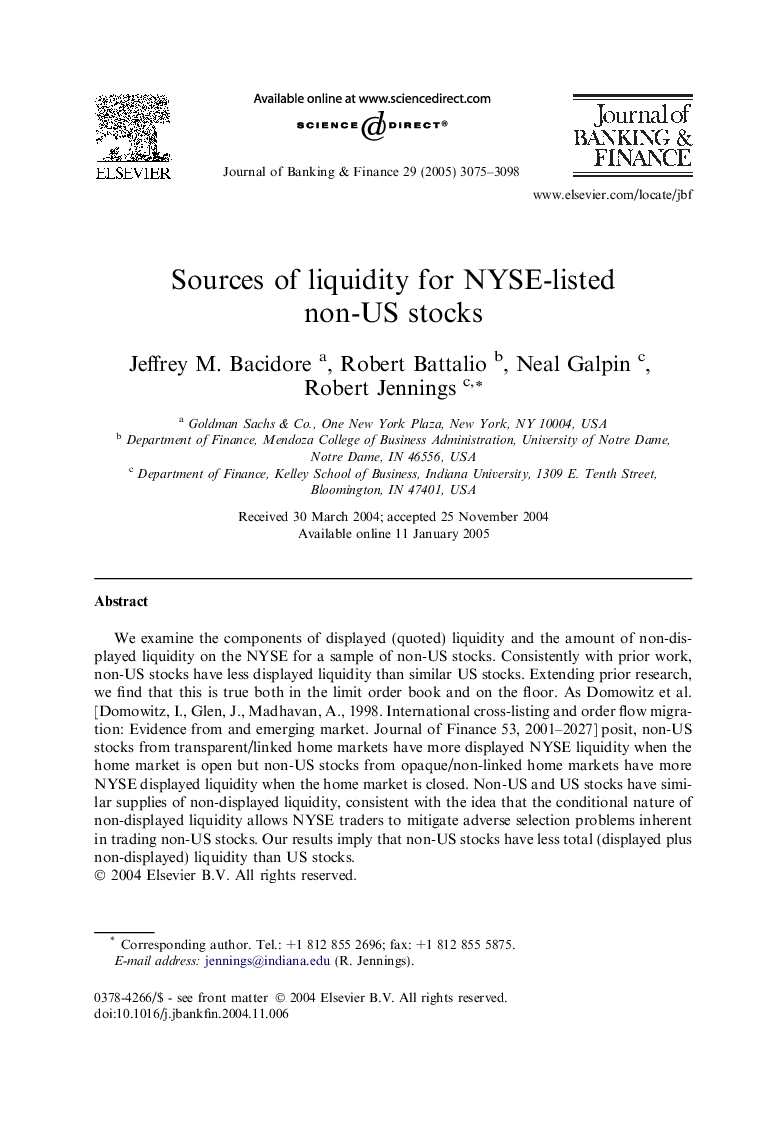| Article ID | Journal | Published Year | Pages | File Type |
|---|---|---|---|---|
| 5091670 | Journal of Banking & Finance | 2005 | 24 Pages |
Abstract
We examine the components of displayed (quoted) liquidity and the amount of non-displayed liquidity on the NYSE for a sample of non-US stocks. Consistently with prior work, non-US stocks have less displayed liquidity than similar US stocks. Extending prior research, we find that this is true both in the limit order book and on the floor. As Domowitz et al. [Domowitz, I., Glen, J., Madhavan, A., 1998. International cross-listing and order flow migration: Evidence from and emerging market. Journal of Finance 53, 2001-2027] posit, non-US stocks from transparent/linked home markets have more displayed NYSE liquidity when the home market is open but non-US stocks from opaque/non-linked home markets have more NYSE displayed liquidity when the home market is closed. Non-US and US stocks have similar supplies of non-displayed liquidity, consistent with the idea that the conditional nature of non-displayed liquidity allows NYSE traders to mitigate adverse selection problems inherent in trading non-US stocks. Our results imply that non-US stocks have less total (displayed plus non-displayed) liquidity than US stocks.
Related Topics
Social Sciences and Humanities
Economics, Econometrics and Finance
Economics and Econometrics
Authors
Jeffrey M. Bacidore, Robert Battalio, Neal Galpin, Robert Jennings,
